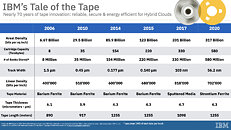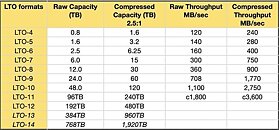Huawei Develops SSD-Tape Hybrid Drive with 72 TB Capacity
Huawei is advancing archive storage technology with the development of a new solution called the Magneto-Electric Disk (MED). Aiming to provide an alternative to traditional hard drives, this storage device merges tape and SSD technologies to deliver high capacity and low power consumption. The first-generation MED can hold up to 72 TB of data in a compact 7-inch housing and uses significantly less energy than standard HDDs. The MED was developed as part of Huawei's efforts to mitigate potential supply shortages of conventional hard drives, particularly given the US export restrictions to China. By combining tape storage, traditionally slow but reliable, with a high-speed SSD, Huawei has designed a hybrid storage solution that addresses both speed and efficiency needs.
Data is initially recorded on the SSD for quick access and is then written to the tape in sequential blocks for long-term storage. Frequently accessed data, or "warm" data, stays on the SSD for faster retrieval, while "cold" data, accessed less often, is stored on the tape. According to early specifications, a MED rack can store over 10 petabytes and consumes under 2,000 watts of power, significantly less than HDD-based storage. This efficiency could redefine data archiving, especially for large-scale data centers. Data throughput on the MED is projected to reach 8 GB/s, highlighting its potential to handle high-demand environments. The MED is expected to launch in 2025, with a second, more compact generation targeting a 3.5-inch form factor in 2026 or 2027.
Data is initially recorded on the SSD for quick access and is then written to the tape in sequential blocks for long-term storage. Frequently accessed data, or "warm" data, stays on the SSD for faster retrieval, while "cold" data, accessed less often, is stored on the tape. According to early specifications, a MED rack can store over 10 petabytes and consumes under 2,000 watts of power, significantly less than HDD-based storage. This efficiency could redefine data archiving, especially for large-scale data centers. Data throughput on the MED is projected to reach 8 GB/s, highlighting its potential to handle high-demand environments. The MED is expected to launch in 2025, with a second, more compact generation targeting a 3.5-inch form factor in 2026 or 2027.










